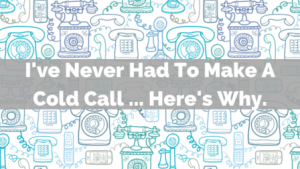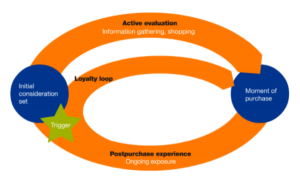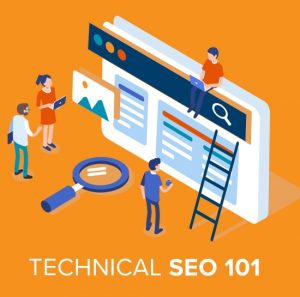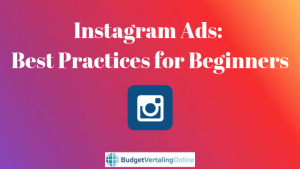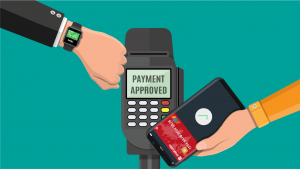Execution is hard. Tweaking keywords, fine-tuning targeting and upgrading ad copy is tough. Everything else shouldn’t be.
Overcomplicating your life with extraneous activities not only increases confusion, but it also drags you away from the truly important stuff that dictates results.

Instead, here are five lazy PPC tips to help you stay focused on what truly matters in order to increase results and slash costs.
1. Model Success (And Failure) Before It Happens
Practitioners often get that itch to dive headfirst into keyphrase research, competitive metrics, and landing page ideas when starting a new ad campaign. But often the easiest way to be “lazy” is to avoid doing any real work until you absolutely have to.
Modeling success (or failure), before diving into the real work, can help save you a ton of time when you actually start doing the in-depth research, analysis, and creation. It helps you focus and prioritize, keeping things as simple as possible.

For example, start by grabbing some basic keyword data from your favorite tool. Here’s “cookie delivery” from SEMrush. (BTW how amazing does that sound right now?!)

Let’s zero-in on the most popular and competitive match for now (we’ll explain why in the next section).
The goal is to come up with a basic, conservative estimate for what ONE sale might look like, with a few different scenarios of your effective CPC and conversion rates. You can get this data from tools, historical information, or these two great benchmark resources:
We have no idea what’s reasonable right now. Nor should we spend the time at this point to figure it out. So a simple sensitivity analysis (with expectations somewhere in the middle ranges) should be enough to start.

Now you have a rough idea of how many visits you’ll need to produce one sale. What will that cost you? And what does the ROI on one sale look like? I’m so glad you asked!

In 5 minutes, you’ve figured out (more or less) where your CPC and conversion rates need to land in order for this particular product to break even, or produce any meaningful revenue.
In our example here, it looks like we’ll need at least 2%+ conversion rates if the CPC falls anywhere in the $ 2.5-$ 3.5 range.
You’re also starting to see how the relationships between these variables are working together. For example, it’s not clear if you can lower that CPC rate just yet, so another option might be to increase the gross revenue per conversion somehow by bundling products, increasing customer LTV, etc.
Speaking of revenue, what would this look like if you scale? And what’s a decent looking budget to start small, prove this model, and then scale if things start looking good?
![]()
Easy math. 10 minutes of work. And you can save yourself a lot of time and hassle by isolating which variables (or levers) need to move in which direction to provide the potential results you need.
Is this statistically significant? Not even close.
But now you have a rough idea of where things need to land, and what to look for as you begin running a new campaign to iterate on the fly.
Another supplementary benefit is that you have a little ammo to argue that campaigns need more time to self-correct (without getting antsy and pulling back too soon).
TL;DR: Modeling ahead of time helps you prove success on a small scale, limit your losses if things don’t look good, or ramp up when ready.
2. Obsess Over 80/20 Relationships
An Italian economist was tending garden when he made a shocking discovery.
The year was 1896. The air cool, with a draft signaling winter. (Just kidding, I made that last part up. I wasn’t alive in 1896.)
Vilfredo bent over his pea pods, examining the yield. Coincidentally, it resembled the wealth distribution of his own beloved country.
Most of the peas in his garden (80%) came from relatively few (20%) pea pods. So too, did the majority of land ownership (80%) reside with a minority (20%) of the Italian population.
The 80/20 analysis, or Pareto Principle, has been applied to just about everything else since then to explain the bizarre but true relationship of inputs to outputs.
Chances are, your PPC campaigns are an 80/20 gold mine too. Here’s why:
Smart people over-intellectualize. It’s a good trait most of the time, except when it forces you to expend 10x the time and energy on something when in reality it doesn’t need it.
Going through your account and looking for 80/20 patterns can help you avoid activities that are overkill, and might take all of an hour. The good news is that you should be able to literally spot it with your eye – no analysis needed (or allowed at this point).
For example, start with all the usual suspects:
- Best keyphrases (for both volume & intent)
- Best ad ‘templates’ (that can be expanded)
- Targeting (i.e. people in which states, times of day, etc.)
- Devices (where some might benefit from mobile intent, while others won’t)
Find the 20% dictating 80% of your results, and focus all of your limited resources on those.
Chances are, you’re spending waaaaaaaayyy too much time on losers.

Here’s how dead-simple this should be. You open up an Ad Group, and it’ll look something like this:

Zero-in on just the keyphrase for now, ignoring the Quality Scores (because I need something to talk about after this section!).
This example ad group was a new, unoptimized one we received from a client. So the results may not be skewed as much in your own, but regardless, a similar pattern will emerge.
Yes, you should continually add new keyphrases to the mix. But ultimately the majority of results are going to come from a few well known ones.
Before faux-internet gurus began popping up, there was Drucker. And one of his central points in 1967 (!) was to focus on strengths instead of fixing weaknesses.
TL;DR: Focusing your effort on your best performers helps make life less complicated than it needs to be, especially in the case of limited bandwidth, time, energy or money.
3. Leverage Results By Maximizing Quality Score
Yes, your Cost per Click, Cost per Conversion and Return on Ad Spend are critically important.
But…
They literally don’t matter until you work out the Quality Score. Because everything flows from that, and tiny increases have the power to result in exponential benefits. Especially when social channels are adopting similar measures, like Facebook’s Relevance Score, where a 1% post engagement increase results in a 5% cost reduction!
You already know this. However like the last section, it pays to obsess over what the score embodies.
For example, understanding the visitor path is critical to increasing Quality Scores. Generally, it looks something like:
- Step #1. Visitor uses a navigational, informational or transactional query with some specific intent (usually also indicating their customer journey stage).
- Step #2. They scan the top three (or four) ad titles and descriptions quickly before moving down to the organic listings.
- Step #3. If something catches their eye, they’ll immediately form an expectation about what they’re going to see when they click on the ad.
- Step #4. Hitting your landing page, they form a first impression in about 17 milliseconds and bounce if it doesn’t meet those expectations.
The point is, properly optimizing your campaign, ads and landing pages for specific keyphrases involves more than just the basic best practices you read online.
If we head back to the previous example, you’ll see the underperforming keyphrases with high costs per conversion also have mixed-to-low Quality Scores. Jackpot.

In a few days, we can provide some quick wins by optimizing along the visitor path.
- Separate Ad Groups based on visitor intent (i.e. informational vs. transactional)
- Find your most popular keyphrases through testing and tools
- Break the winners into more specific Ad Groups
- Create new unique ads emphasizing original value prop for most popular keyphrases
- Create new unique landing pages (matching visitor intent and ad value prop)
- … test multiple ad variations
- … test multiple landing page variations
Simple. And the results?
New lead conversions jumped 900%, the conversion rate went from less than a percent to over 26% in one case, and Cost per Conversions dropped as much as 99%. NOT because of mysterious ninja PPC skillz. Just keeping the fundamentals fundamental and focusing on the highest places for leverage.

TL;DR: Optimize for relevance and everything else seems to fall into place.
4. Increase ‘Macro-Conversions’ by Raising ‘Micro-Conversions’ with Remarketing
The vast majority of your website traffic is going to leave without giving you anything in return.
Only a tiny minority, somewhere between 1-10% might purchase, become a lead, or give you an email. Everyone else? Gone forever.
With that in mind, it’s insane to think that remarketing is STILL an underutilized tactic.
Average costs are ~46% less, while targeting people who’ve already shown interest in your brand is a no brainer when compared with trying to drive in new visitors who have no idea who you are (or more importantly, why they need you).
And here’s the kicker:
Virtually NO ONE is going to buy on their first visit. Instead, at least 50% of customer interactions are multi-event, multi-channel journeys.
Meaning peeps are going to interact with your brand and visit your site at different times while they’re in different stages of the buying cycle. So the best way to increase your big conversions (like leads and sales) is to increase the ‘micro’ conversions of moving people from one step to the other. Example:
- Awareness: Content or other ‘top of the funnel’ promotion to build attention and interest.
- Consideration: ‘Lead magnets’ or other free offers to get initial customer data (e.g. name and email).
- Decision: Direct purchase or sales related messages.
Are your ‘sales’ related remarketing ads not working? Why not?
Maybe the person’s not ready to convert? Timing isn’t right, and therefore the offer isn’t either. How about moving up in the sales funnel with a soft sell like an ROI calculator.

It’s not a direct prospect. Not a perfect solution. But it does give you the chance to nurture a new lead over time and test how the lower CPC pans out with the ROI eventually.
Obviously, ad creative is a much bigger deal with Display ads used in remarketing and retargeting. One old copywriting trick is to study the headlines on magazines. You know, those glossy printed things buried in the back of Target behind the ‘books’. Remember those?!

A variation of this is to look at the online equivalents. Believe it or not, BuzzFeed is one of the best in the business (God help us) at getting people to take notice and click. Study their headline formulas, catchy descriptions and evocative visuals for inspiration.

Remarketing or retargeting can get even more powerful and granular with social advertising options, like Facebook’s custom audiences. At almost every stage of the aforementioned funnel, you can target specific users with highly targeted messages that can make up for the inherent lack of intent that typically plagues social ads (especially with the help of Dynamic Product Ads, which we’ll take a look at soon).
Another clever tip learned from Massimo at AdEspresso is to ‘hack’ social sharing with remarketing. For example, use a server redirect with a ‘Website Custom Audience Pixel’ when you share external content on social networks. When someone ultimately clicks on that (and gets redirected to the final content), you can retarget those people with your own ads based on the specific topic or content.
TL;DR: Remarketing is one of the easiest and most cost-effective ways to convert more of your web traffic.
5. Automate to Increase Message Relevance and Timing
Email-based marketing automation has become popular because personalized emails improve click-through rates by 14% and conversion rates by 10% (according to the Aberdeen Group).
Sending more relevant emails also results in 18x more revenue, says Jupiter Research.
Cue the oft-quoted cliché that the best marketing messages are delivered to the right person at the right time.
Digital ad optimization is still in its infancy, but showing promise.
Google Shopping Ads (previously Product Listing Ads) work well because a visitor is showing a tremendous amount of purchasing intent when they search for ‘red Nike men’s running shoes’. Whereas Facebook’s relatively recent Dynamic Product Ads are more similar to remarketing campaigns, where you target users based on website interactions or purchases.
Both are equally effective. Why?
Because 86% of people ignore banner ads. More are blocking banner ads altogether. (Not to mention Apple’s interest in ad blocking).

So for online ads to continue being effective (a) in the face of more competition, (b) with evolving consumer behavior and (c) serious attempts by powerful companies to block them, they need to get better at:
- Delivering the right message
- To the right person
- At the right time
And as proven in other mediums, automation is the best way to make that happen.
The good news?
Digital ad automation also helps you scale, lowering the time investment needed to create TONS of keyphrase / audience + ad variations.
Gartner Research estimates a 15% savings on creative production for companies using email marketing automation. Similarly using Facebook’s Dynamic Product Ads, The Honest Company (which has the best domain name ever) saw a 38% reduction in cost per purchase (with a 34% increase in click through rates too). Not bad.
With both Google Shopping and Facebook’s Dynamic Products, your product feed (or catalog) can take care of the heavy lifting, serving as a virtual database to power ads being shown.

Image: Facebook
The exciting thing about this new world of contextual marketing is that the possibilities to increase results are truly endless. While also making your life insanely easier.
Which means more time to rewatch old 30 Rock episodes on Netflix! Yay!

For example, incorporating BOTH Google Shopping and Facebook’s Dynamic Product Ads, you automate ads being shown (similar to how different automated emails are triggered) based on if people:
- Search for blue purses
- Browse blue purses on your site
- Add a blue purse to cart but don’t purchase
- Purchased a blue purse that should go with a recommended black dress
Please don’t let my lack of fashion confuse the point.
TL;DR: Introducing more digital ad automation techniques can (and should) result in better results, higher sales, with less time spent on the more mundane, time-consuming aspects of this gig.
In Conclusion…
There’s a nagging tendency to try and keep up by doing more and more in our ever-changing digital marketing landscape.
But often the best path to profitable growth is actually doing less when your resources are limited.
Model success and failure ahead of time if possible before even lifting a finger. Constantly 80/20 your campaigns to stay focused on where the big wins are located, like in raising Quality Scores. Incorporate remarketing to help improve lead nurturing and ‘micro-conversions’ to ultimately increase the big conversions that matter. And use new ad automation techniques wherever possible to put results on autopilot.
Go ahead. Be lazy.
A higher ROI doesn’t come from more ads. It comes from better ones.
Digital & Social Articles on Business 2 Community(82)

